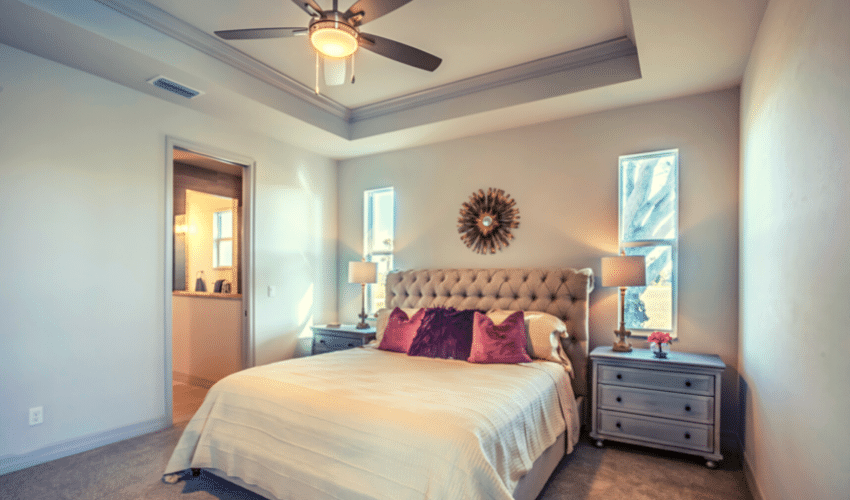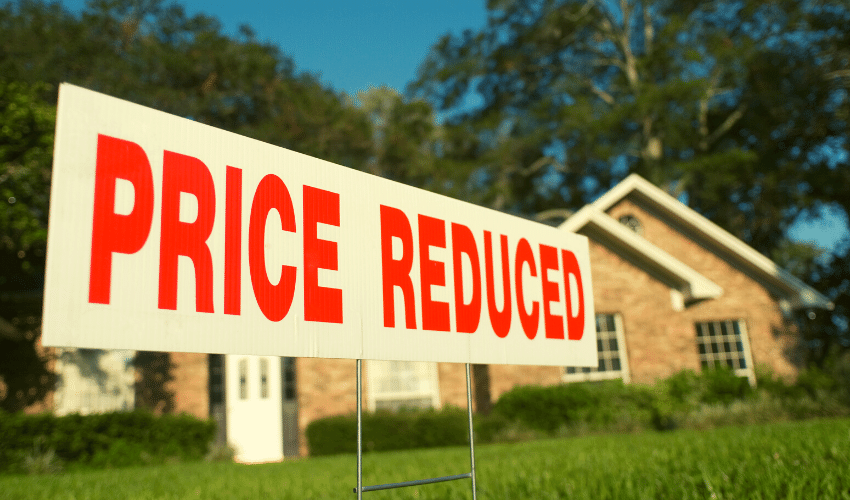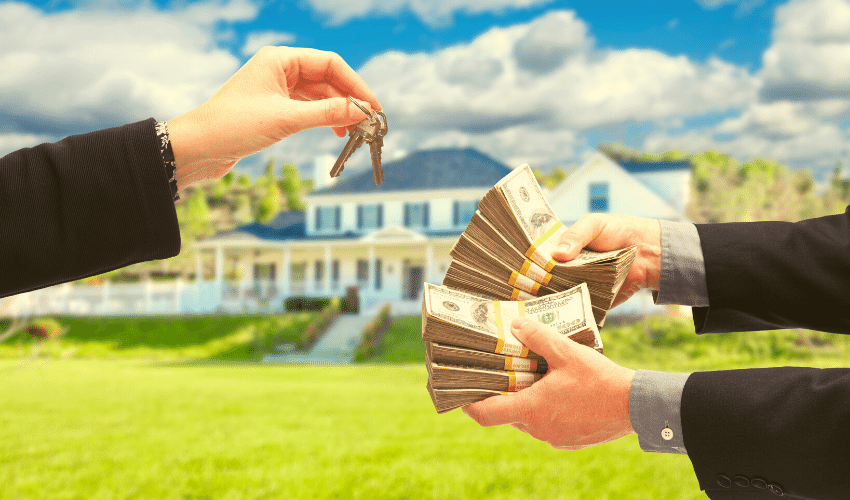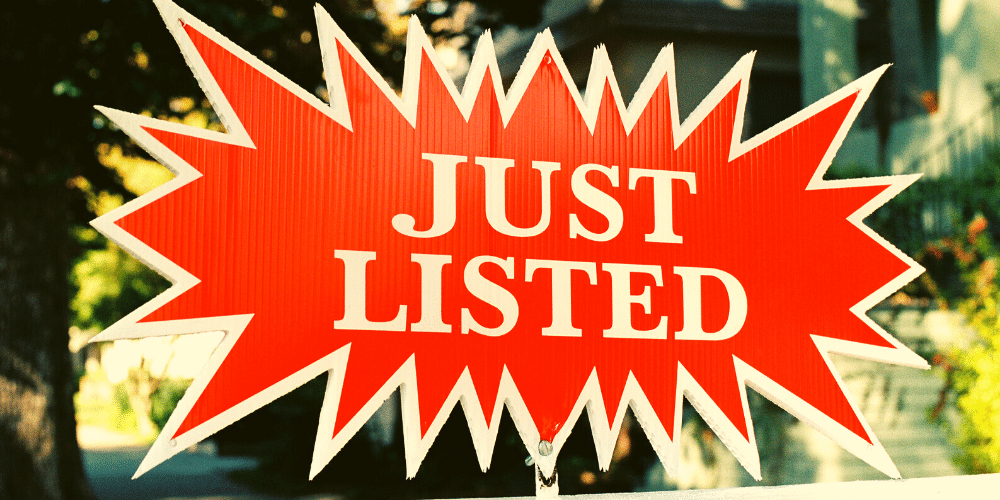Listing your home for sale can be stressful, and the longer your home sits on the market, the less likely it will sell. The window of opportunity to sell your house for maximum value is shorter than you might think.
Angie Cole, a top Triangle real estate agent expects a bidding battle for any property listed within seven days. However, buyers will offer 5% to 10% less for homes that are still available for sale after 21 days under current conditions.
Here are six house pricing strategies for listing your home for sale. These strategies will allow you to set a fair price and help you achieve your selling goals.
Prices for a house in 2023
The 2022 housing market was reminiscent of the Wild West in many ways. This was due to low mortgage rates and a reduced supply. As the year progressed, however, markets began to feel tired as prices soared to the climax.
Buyers began to become frustrated by the chaotic state of the market in the fall. In Q2 2021 54% of agents had heard or seen buyers canceling purchase contracts because of regret over an excessive contract price. Listings were then put back on the market.
Dominguez says that the area is becoming “a bit more of a buyer’s market than last spring.” It’s now a conversation. Dominguez states that some buyers who waited are finally seeing the benefits of their patience and can now purchase a decent home at a fair price.
Dominguez is echoed by other agents. A survey of top agents about 2023’s real estate market conditions revealed that 82% expected conditions to favor sellers overall. However, the market will become more balanced over the coming year, according to 84%.
Analysts don’t expect a crash, but someone selling a house in 2023 shouldn’t base their pricing strategy on last year. Your real estate agent can help you keep track of market changes and assist with your house pricing strategy.
1. Start with a base value – Estimate your home’s value
You need to establish a baseline price for listing your home for sale, in order to set the right price. An online search tool is a great way to quickly find out the average home price in your area. You can use a variety of online tools to answer questions about your home and determine the estimated value of your home.
This estimate can not replace an appraisal or inspection, but it can be used as a starting point to determine the value of your home.

2. Staging your home
When you stage your home, you minimize the negative aspects and highlight the positives of your property in order to make a lasting impression. To remove distractions, declutter and depersonalize.
To brighten the space, paint a neutral wall color, get rid of dated window treatments, arrange furniture strategically, and take out bulky items. These small changes will enhance the home’s unique qualities and increase its perceived value.
According to NAR’s 2021 Profile on Home Staging, more than 25% of buyers will overlook any property flaws if the home has been staged.
Staging can be an investment that maximizes the return on your property’s sale. It usually costs less than the initial price reduction. According to data from RESA, 75% of homesellers experienced a return on investment of between 5% and 15% above the asking price.
According to an International Association of Home Staging Professionals survey, staging can help you sell your home three to thirty times faster than if it were not staged. Staging can also increase the average sale price by as much as 20%
3. Look at comparable sales for guidance
Property values are highly local and constantly changing. Agents and appraisers use comparable sales (aka “comps”) to price houses and capture changes in the market.
What is a comparative market analysis?
Comparative market analysis (CMA), which compares your home with other properties recently sold in the same area, condition, and size.
A CMA can be 30-plus pages in length and cover:
- A deep dive into the subject property including any photos or new features that are worth noting
- There are approximately 10-12 comps within a radius of the property and details for each one
- A summary page listing the price of each comp
- A map showing all listings included
- Tables and charts that display market trends data, such as inventory numbers and the average price per sq foot, are available.
Are you able to do your own comps?
While you can perform your own comps analysis, however, a top agent will have the experience of assembling hundreds of CMAs. They will be more efficient at pulling the correct data and making dollar adjustments based on competitive differences.
Dominguez, for example, deals with many bungalow-style homes measuring between 2,000 and 2,500 square feet. Upgrades or additions can raise the asking price up to $100,000 to $150,000.
What price do you set based on comps?
Imagine you had a CMA that contained about 12 listings. This page could look like this:
- The lowest price: $575,000
- Average price $621,318
- Highest price: $690,000
You might price your home at $650,000 if it appears that your house is a little more expensive than the average, and the market has heated up. Perhaps the photos show that comps are better than your inherited house that hasn’t been updated in decades.
This might mean that you are at the lower end of $575,000 for the work required to build the home. This range will help you to see that pricing above $690,000.000 is way too high. However, going higher than $620,000 for the group average should be supported by the fact that your house has some competitive advantages.
4. Use the real-estate pricing pyramid
This long-held real pricing strategy examines the relationship between your home’s asking price and the number of potential buyers who are likely to view your home.
In general, the higher you price your home above market value, the smaller your potential buyer pool gets. Your agent and you can discuss where and why to begin the pricing pyramid. Take, for example:
Market value price:
The majority of homesellers aim to set a market-value list price that is appropriate for the seller, attracting roughly 60% of active buyers. Buyers and their agents also research market value so make sure you hit the sweet spot.
NAR’s 2021 Profile Of Home Buyers And Sellers shows that buyers tend to purchase their home for 100% of the asking cost (with 29% buying for more than the asking).
Price just below market value:

The pricing pyramid allows you to price your property 10% to 15% lower than the market value. This is a great strategy for generating more traffic if your property is unique or has not been sold recently.
Dominguez priced a Park Forest, Illinois home at 15% to 20% under the market. The village is small with a population of about 21,000, so he had to spread out the comps over several months. He says that the asking price was $50,000 higher than market value and it sold for approximately $50,000 more than what he had estimated.
Price above market value:
Because it reduces the buyer pool by 10%, it is rare to price your house at 10% to 15% higher than market value. Sometimes, however, your agent may find it appropriate.
Dominguez states that houses are priced higher when they are located in good schools or have other added value than the comparables.
He says that it is “very risky”. He might recommend starting at 10% above the market value for such cases. However, if there is no interest, he will suggest lowering it after two to three weeks.
Thomason says, “I ask my sellers to not overprice. But if they feel they are going to do so, I get a commitment upfront from them that they will lower the price within 10 to 12 days of it being on the market.”
5. Adjust for online pricing benchmarks
A 2022 house pricing strategy should consider the location where most buyers shop for homes. Recent research shows that 95% of buyers used online tools to help them find a home. 41% of buyers recently stated that they started their search online for a home.
Once you have a price in mind, adjust it to ensure that it is seen as often as possible by buyers searching for properties in your price range.
Many online real estate websites have price filters that allow you to set prices in increments of $25,000, for example. If you list your home for $352,000, buyers may not be able to see it if they filter the maximum price at $350,000.
6. Be aware of seasonal shifts in your market
The best time to list your home for sale is during the spring when you have the opportunity to enjoy the warm weather. However, local trends can be quite different from national ones.
According to our data, June is the best month to sell your New York City home. You could make 9.18% more than the annual average. According to our internal transaction data, August is the best month to sell your house quickly in Los Angeles. Homes sell on average four days sooner.
An experienced agent will be able to find the benefits of listing at any time.

7. Find out what a cash buyer would spend
It is not always about making the highest profit. Sometimes, selling fast is the best strategy. Knowing your goals and looking at different buyers is part of house pricing strategies. Although cash home buyers may not be as attractive at the time of sale, they can help you sell your house quickly. Sometimes, pricing for cash buyers can work in your favor.
Traditional sales require some effort, regardless of where you decide to set your price. Some sellers want more certainty as to when their house will sell so they are seeking an easier solution.
An iBuyer, which uses pricing technology to offer a cash price on your house, may offer you a cash offer. This is the simplest option. Basically, you give a few details about the house and the iBuyer will name the cash price. Then you can decide whether to accept the offer or not.
Conclusion:
Pricing your home requires a lot of strategic thinking and analysis. You don’t need to choose one strategy. You can actually come up with a price that attracts buyers if you combine comps and the real estate pricing pyramid.
These tips will help you stay on the right track.
- A top agent in real estate can conduct a comparative market analysis, which examines the sales prices of homes that have recently been sold with similar characteristics.
- Your agent can help you determine which home features are worth adding value (such as a new patio or bathroom) and which ones will lower the value (such as an older roof or dated finishes). These features will vary depending on the quality of nearby homes.
- You can skip the hassle of listing your home and pricing it. Instead, work with a cash buyer to request the Simple Sale price.
These house pricing strategies will help you avoid picking an exorbitant price for your home, which can frustrate potential buyers.


